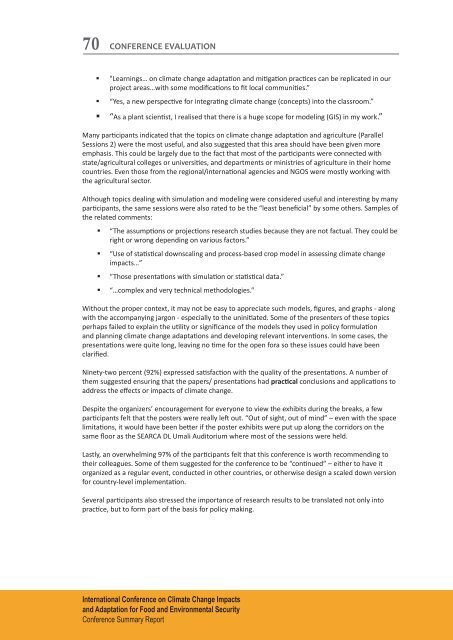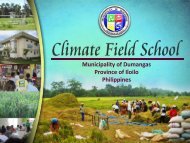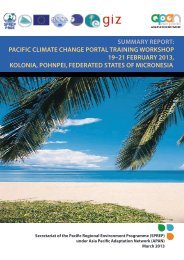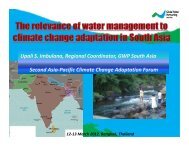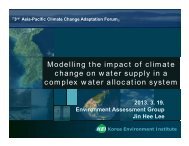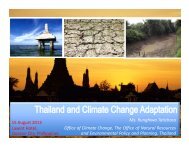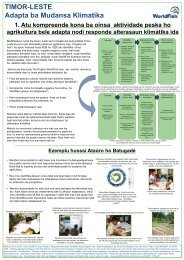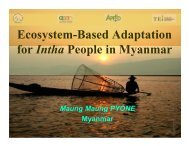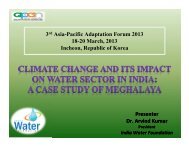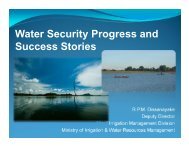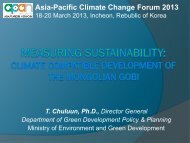PDF file (2.44 MB) - Asia Pacific Adaptation Network
PDF file (2.44 MB) - Asia Pacific Adaptation Network
PDF file (2.44 MB) - Asia Pacific Adaptation Network
You also want an ePaper? Increase the reach of your titles
YUMPU automatically turns print PDFs into web optimized ePapers that Google loves.
70CONFERENCE EVALUATION• "Learnings… on climate change adaptation and mitigation practices can be replicated in ourproject areas…with some modifications to fit local communities.”• “Yes, a new perspective for integrating climate change (concepts) into the classroom.”• “As a plant scientist, I realised that there is a huge scope for modeling (GIS) in my work.”Many participants indicated that the topics on climate change adaptation and agriculture (ParallelSessions 2) were the most useful, and also suggested that this area should have been given moreemphasis. This could be largely due to the fact that most of the participants were connected withstate/agricultural colleges or universities, and departments or ministries of agriculture in their homecountries. Even those from the regional/international agencies and NGOS were mostly working withthe agricultural sector.Although topics dealing with simulation and modeling were considered useful and interesting by manyparticipants, the same sessions were also rated to be the “least beneficial” by some others. Samples ofthe related comments:• “The assumptions or projections research studies because they are not factual. They could beright or wrong depending on various factors.”• “Use of statistical downscaling and process-based crop model in assessing climate changeimpacts…”• “Those presentations with simulation or statistical data.”• “…complex and very technical methodologies.”Without the proper context, it may not be easy to appreciate such models, figures, and graphs - alongwith the accompanying jargon - especially to the uninitiated. Some of the presenters of these topicsperhaps failed to explain the utility or significance of the models they used in policy formulationand planning climate change adaptations and developing relevant interventions. In some cases, thepresentations were quite long, leaving no time for the open fora so these issues could have beenclarified.Ninety-two percent (92%) expressed satisfaction with the quality of the presentations. A number ofthem suggested ensuring that the papers/ presentations had practical conclusions and applications toaddress the effects or impacts of climate change.Despite the organizers’ encouragement for everyone to view the exhibits during the breaks, a fewparticipants felt that the posters were really left out. “Out of sight, out of mind” – even with the spacelimitations, it would have been better if the poster exhibits were put up along the corridors on thesame floor as the SEARCA DL Umali Auditorium where most of the sessions were held.Lastly, an overwhelming 97% of the participants felt that this conference is worth recommending totheir colleagues. Some of them suggested for the conference to be “continued” – either to have itorganized as a regular event, conducted in other countries, or otherwise design a scaled down versionfor country-level implementation.Several participants also stressed the importance of research results to be translated not only intopractice, but to form part of the basis for policy making.International Conference on Climate Change Impactsand <strong>Adaptation</strong> for Food and Environmental SecurityConference Summary Report


